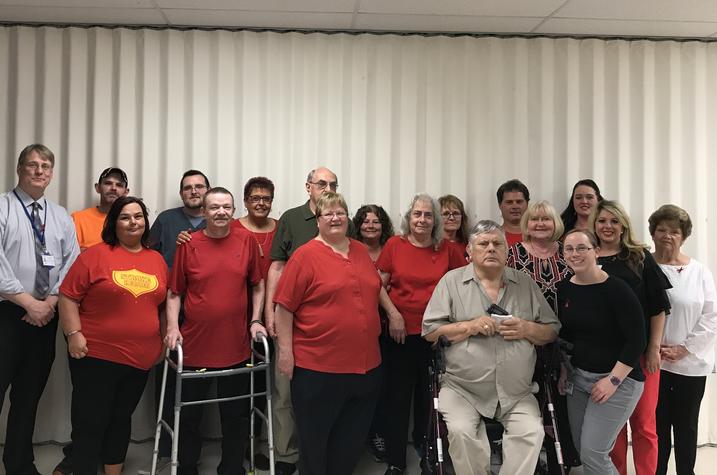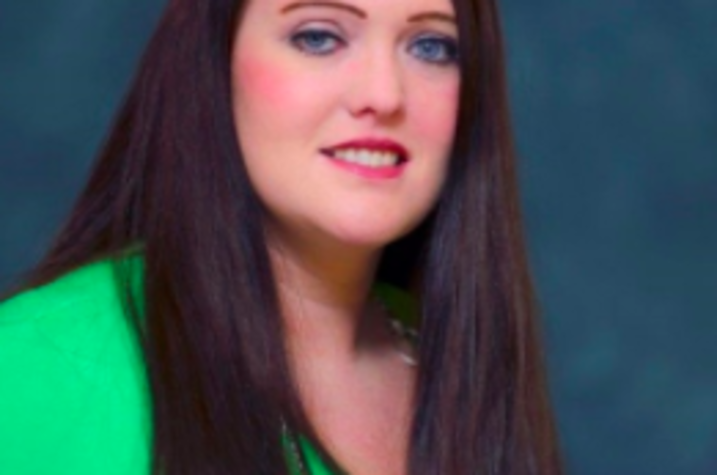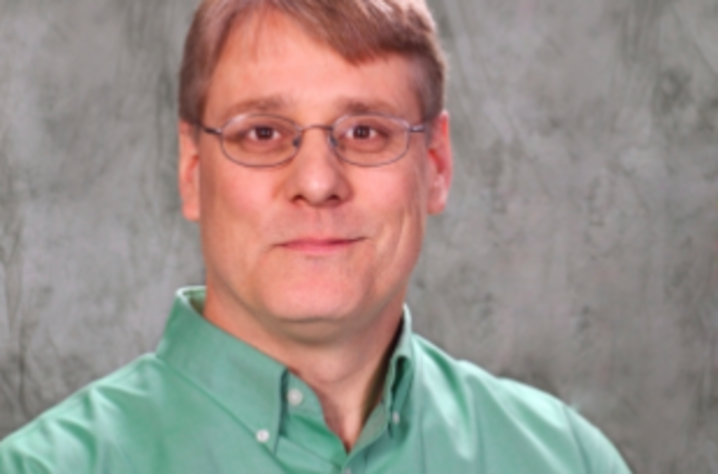Community Transition Program for Stroke Survivors Improves Health, Saves Money
HAZARD, Ky. (Oct. 26, 2017) – Kentucky has one of the highest rates of stroke in the nation, and in Eastern Kentucky, the burden of cardiovascular disease is especially severe. An innovative program, though, is improving patient outcomes and saving money in the region by providing intensive, personalized support for stroke survivors and their families.
The Kentucky Care Coordination for Community Transitions program — a partnership between the University of Kentucky Center of Excellence in Rural Health (CERH) in Hazard, Appalachian Regional Healthcare (ARH), and the UK College of Health Sciences — integrates a CERH community health worker with the ARH rehabilitation team to help stroke survivors transition back to their homes and to facilitate a network of community support.
Established in 2014 with pilot funding from the UK Center for Clinical and Translational Science and ARH, the project evolved into a permanent program in 2015. Just past its two-year anniversary, the program has supported nearly 150 individuals, helping them adjust to the new realities of life after a stroke, learn about chronic disease self-management, navigate complex health care and insurance systems, monitor their rehabilitation, and connect with other survivors and caregivers.
The program has markedly improved health and wellbeing for participating stroke survivors, among whom there have been zero 30-day hospital readmissions and only one emergency department visit (which wasn’t stroke related). This is compared to 19 percent and 8 percent, respectively, of the matched control group of stroke survivors who chose not to join the program. The result is not only better health and quality of life for survivors and caregivers, but also a cost savings of more than $1.4 million over two years to the local health care system.
“We’re keeping people healthier and saving a phenomenal amount of money for the health care system,” said Patrick Kitzman, Ph.D., founding director of the program and professor of physical therapy in the UK College of Health Sciences. “But we also concentrate very much on the caregiver and family — we always look at the whole unit with our follow-up education and support.”
In 2016 alone, the program supported 70 individuals, including 512 encounters between the community health worker and participants and more than 1,000 provided services. Half of participants needed assistance obtaining durable medical equipment, 71 percent needed assistance obtaining essential medications, and 35 percent needed assistance obtaining health insurance.
A critical element of the program’s success is the integration of the community health worker, Keisha Hudson, with the stroke rehabilitation team at ARH. Hudson, who is from the local community, participates in the discharge planning for participating stroke patients so that she can establish a relationship with them and their families while they’re still in the hospital and get a head start on arranging for anything they might need when they get home — shower chairs, wheelchair ramps, medical equipment, etc.
Hudson then visits patients at their home within a week of discharge and provides weekly face-to-face meetings or phone follow-up calls which tapers to bi-weekly or monthly check-ins as patients improve. Some patients, however, have stayed with the program since its beginning.
As she works with patients and families, Hudson provides health education and tracks compliance with medical visits and medication; when she notices that a patient has missed an appointment or medication, she figures out why. Sometimes the problem can be as simple as the patient lacking transportation, in which case Hudson can help them make arrangements to get to the clinic or pharmacy.
Such attention and regular communication allows Hudson to develop a personal relationship with patients and their families to the extent that she can often sense when something is “off” and intervene before a serious problem develops. While none of the patients in the transition program have been readmitted to the hospital for stroke complications within 30 days of discharge, Hudson’s attentive care has led to life-saving interventions related to patients’ other health issues; nearly 60 percent of participants have five or more co-morbid health conditions. Once, while speaking with a patient over the phone, Hudson recognized that the woman’s breathing sounded especially labored, and she told the patient to go to the hospital immediately. It turned out the woman had a dangerous level of fluid on her lungs and needed urgent treatment. While making a routine visit to check on a different patient, Hudson arrived to find them in a diabetic coma. With yet another patient, she caught an infected surgical site that required immediate attention.
Hudson also hosts a monthly stroke survivor and caregiver support group. It meets at the hospital, which allows currently hospitalized stroke survivors or their caregivers to come downstairs from the care unit and connect with the group before they go home.
“The program has evolved in the community because we’ve built trust as people hear about us through word of mouth. Some patients and caregivers have become really big advocates for us. One of the patients we’ve worked with for a while has had people in his community who’ve had strokes and he himself has referred them to us. We’ve proven to our community that we’re here to help and we’re here to stay and when we say we’re going to do something, we do it — that’s helped a lot,” Hudson said.
Dr. James Hammock, who runs the stroke rehabilitation program at ARH, sees the community transition program as essential in ensuring continued care for his patients after they leave the hospital, which can be especially challenging in a rural area plagued by an elevated prevalence of stroke and co-morbidities and limited access to health care. From his perspective, the benefits of the program have been “innumerable,” including improved patient compliance, patient education, community integration and interdisciplinary communication.
“I came to this region to help improve patient care for disabled persons, and one key component of a well-rounded program is ensuring optimal care throughout the entire spectrum of care. The community transition program allows me to worry just a little less about my patients when they return home," he said. "Patients prefer to stay close to home for healthcare, and a partnership such as the one between ARH and UK allows them to do just that while staying within the confines of medical care. Medical literature has demonstrated time and again that a patient and family who are bolstered by a program such as this are less likely to return to the hospital in the short-term and more likely to be successful both medically and functionally in the long-term.”
Hammock recognizes the necessity to provide support and education to a patients’ caregivers, who play a pivotal role in recovery and can ultimately be the deciding factor between success and failure.
“Caregivers must know how important they truly are, and programs such as this will allow us to shift our focus to the caregiver for a moment,” he said.
For Tonya Kincaid, whose husband Mark had a stroke eight years ago at age 42, Hudson, Kitzman and the Community Transition program have provided life-changing support, both logistically and personally. Kincaid is her husband’s primary caregiver, and before they were referred to the program almost two years ago, she felt like she was fighting every battle single-handedly.
“I just did it alone. It was so frustrating because sometimes it takes a professional title, or someone who has the energy not to take no for an answer, and sometimes I’d just get worn down. I didn’t have anyone as a back-up then, and no support group, and now I do,” Kincaid said. “Anything we ask of Keisha, she helps us with. I’m constantly fighting Medicare and Anthem over therapy and equipment. I go at it for anything that Mark needs. And I hit roadblocks sometimes. Once I told Keisha, ‘I’m always researching and fighting Medicare, and sometimes I just get really tired.’ And she said, ‘Well, let me tell you what. You’ve been your husband’s voice for six years now. Why don’t you take a rest and let me do some of the fighting for you.’ And that just meant the world to me, because she really meant it. She takes a lot off of me. She helps us get appointments, equipment, if we need paper work faxed from the doctor — all we have to do is call her and she takes care of it immediately. She will go to the doctor’s office herself and pick it up if she needs to. She just doesn’t take no for an answer. She really is a true advocate for us, and for everyone in the group.”
In addition to providing important health education from visiting speakers each month, the support group meetings have also helped the Kincaids develop strong friendships with other families who have experienced a stroke.
“The meetings are wonderful because we’ve just made such good friends. If you’ve not been through this, you just don’t understand it. So it’s nice to have a meal and talk about what you’re going through with people who have been there. One couple came in recently and they were so happy because the husband, who’d had a stroke, could cut his own finger nails now. To most people, that’s not a big deal at all. But to us, we’re like ‘Yay!’ because it’s such a big milestone.”
The program has connected the Kincaids with other opportunities as well, including clinical trial opportunities for stroke survivors and treatment options at Cardinal Hill Rehabilitation Hospital in Lexington.
Building upon the successful model established over the last two years, the program will soon expand to support individuals recovering from traumatic brain injury. Hudson has also expanded her capacity to support participants by becoming trained to provide the Stanford Chronic Disease Self-Management program, in addition to her training in diabetes and mental health management. The program was recently listed with the National Stroke Association, and the program team is currently exploring options for sustainable funding via partnerships, sponsorships, and reimbursement for services.
“We’ve invested in this area, and this program and these people have become a small family where everybody is checking on everybody else,” Hudson said. “I had big dreams for this program anyway, but it’s been more successful than I ever imagined it could be. It just takes a whole team.”
Perry County Stroke Support meetings are co-hosted each month by the UK CERH and ARH. They are held the fourth Wednesday of each month at 5 p.m. at Appalachian Regional Healthcare Regional Medical Center in Hazard. Anyone from the community can join the Community Transition program, and new members are always welcome. For more information contact Keisha Hudson at the UK Center of Excellence in Rural Health at 606-439-557 or keisha.hudson@uky.edu.







